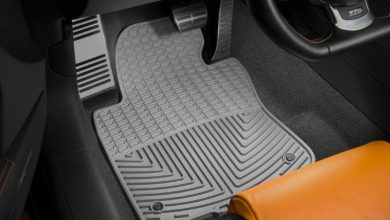About PlugBoxlinux: A Lightweight Linux Distribution

About PlugBoxlinux is an innovative, lightweight Linux distribution designed for single-board computers like the Raspberry Pi. Its simplicity, efficiency, and compatibility make it a standout choice for users seeking a minimalistic operating system for their projects. With its origins rooted in Arch Linux, PlugBox Linux has been fine-tuned to cater specifically to small-scale devices while retaining the versatility and power of Linux.
Whether you’re a hobbyist, a developer, or someone exploring the world of Linux, PlugBox Linux offers unique features and a streamlined experience. In this comprehensive guide, we’ll dive deep into PlugBox Linux, exploring its key features, installation process, use cases, and much more.
1. What Is PlugBox Linux?
PlugBox Linux is a minimalistic Linux distribution derived from Arch Linux, tailored for devices like Raspberry Pi. Its lightweight nature ensures that it can run efficiently on hardware with limited resources. By focusing on simplicity and speed, PlugBox Linux offers users a highly customizable experience without unnecessary bloatware.
Unlike general-purpose distributions, PlugBox Linux caters to specific needs, such as IoT projects, lightweight servers, or learning Linux fundamentals. Its compatibility with ARM processors makes it an excellent choice for Raspberry Pi enthusiasts.
2. Key Features of About PlugBoxlinux
About PlugBoxlinux boasts several features that make it an attractive option:
- Minimalist Design: A lightweight operating system that avoids unnecessary applications, ensuring maximum efficiency.
- Arch Linux Base: Benefits from the rolling release model, offering the latest software updates and security patches.
- ARM Support: Optimized for ARM-based devices, particularly Raspberry Pi models.
- Customizability: Provides users the freedom to install only the packages they need, reducing clutter.
- Speed and Performance: Designed to run smoothly even on older or low-powered hardware.
These features make PlugBox Linux a preferred choice for developers and DIY enthusiasts who value simplicity and efficiency.
3. Why Choose PlugBox Linux for Raspberry Pi?
The Raspberry Pi is a versatile device, capable of running various operating systems. So, why choose PlugBox Linux?
- Efficiency: With its minimal footprint, PlugBox Linux ensures optimal performance, even with limited hardware resources.
- Flexibility: The operating system allows users to build their environment from scratch, ensuring no unnecessary software is pre-installed.
- Arch Linux Ecosystem: Users can access Arch Linux’s extensive repository, providing thousands of packages for customization.
- Learning Opportunity: For those looking to delve deeper into Linux, PlugBox Linux offers a hands-on experience with its manual setup process.
4. How to Install About PlugBoxlinux?
Setting up About PlugBoxlinux on your Raspberry Pi is straightforward. Here’s a step-by-step guide:
- Download the Image: Visit the official PlugBox Linux website and download the latest image for ARM devices.
- Prepare the SD Card: Flash the downloaded image onto an SD card using a program such as Balena Etcher.
- Insert the SD Card: Place the SD card into your Raspberry Pi’s slot and power it on.
- Initial Configuration: Follow the on-screen instructions to configure your user credentials, network settings, and other preferences.
- Install Packages: Use the Pacman package manager to install additional software based on your project’s requirements.
The installation process emphasizes customization, allowing you to tailor the system to your specific needs.
5. Popular Use Cases for About PlugBoxlinux
About PlugBoxlinux versatility makes it suitable for a variety of applications:
- IoT Projects: Its lightweight nature ensures efficient performance in IoT setups, such as home automation systems.
- Media Servers: Use PlugBox Linux to set up a low-cost media server using your Raspberry Pi.
- Development Platforms: Ideal for coding and testing projects, thanks to its extensive software support.
- Educational Tools: Provides a platform for learning Linux basics and experimenting with open-source tools.
- Custom Appliances: Build dedicated devices like retro gaming consoles or lightweight file servers.
Each use case highlights the flexibility and power of PlugBox Linux when paired with the right hardware.
6. PlugBox Linux vs. Other Linux Distributions
How does PlugBox Linux stack up against other popular Linux distributions for Raspberry Pi, such as Raspbian or Ubuntu Server?
- Performance: PlugBox Linux is faster and lighter due to its minimalist design.
- Customization: Unlike Raspbian, PlugBox Linux doesn’t come pre-installed with software, offering more flexibility.
- Learning Curve: While PlugBox Linux provides a deeper Linux experience, it may be more challenging for beginners compared to Raspbian’s user-friendly interface.
- Software Availability: With access to Arch Linux’s repository, PlugBox Linux offers a broader range of software compared to Raspbian’s limited selection.
While Raspbian and Ubuntu Server are great choices for general users, PlugBox Linux appeals to those who value efficiency and customization.
7. Troubleshooting Common Issues
Like any operating system, users may encounter challenges with PlugBox Linux. Here are some common issues and solutions:
- Boot Problems: Ensure your SD card image is correctly flashed and your Raspberry Pi is compatible with the OS version.
- Network Configuration Errors: Double-check your Wi-Fi credentials and network settings during setup.
- Package Installation Failures: Update the package manager (
pacman -Syu) to ensure compatibility with the latest repositories. - Performance Issues: Optimize your installation by removing unnecessary services and packages.
Troubleshooting is an integral part of working with a minimalistic Linux distribution, helping users learn and adapt.
8. Community Support and Resources
One of the biggest advantages of using PlugBox Linux is its active community and wealth of online resources. The Arch Linux forums and PlugBox-specific groups offer extensive documentation, tutorials, and user support.
Whether you’re a beginner or an advanced user, these communities can help you navigate challenges, learn new skills, and optimize your PlugBox Linux setup.
9. Tips for Optimizing About PlugBoxlinux
To make the most out of About PlugBoxlinux, consider these tips:
- Use Lightweight Applications: Opt for software that aligns with the minimalistic philosophy of PlugBox Linux.
- Regular Updates: Keep your system secure and up-to-date by regularly updating your packages with Pacman.
- Backup Configurations: Save your settings and configurations to streamline future installations.
- Monitor Performance: Use tools like
htopto track system performance and identify bottlenecks.
These tips ensure a seamless and efficient experience with PlugBox Linux.
Conclusion
About PlugBoxlinux is a remarkable Linux distribution that brings simplicity, efficiency, and versatility to single-board computers like the Raspberry Pi. With its Arch Linux foundation and minimalist design, it empowers users to build lightweight, customizable systems tailored to their specific needs.
Whether you’re delving into IoT, setting up a development platform, or simply exploring Linux, PlugBox Linux offers a rewarding and hands-on experience. Its active community, extensive resources, and adaptability make it a go-to choice for developers and hobbyists alike.
FAQs about About PlugBoxlinux
1. What is PlugBox Linux used for?
PlugBox Linux is primarily used for lightweight and customizable setups on devices like Raspberry Pi. It’s ideal for IoT projects, media servers, and more.
2. How does PlugBox Linux differ from other distributions?
Unlike general-purpose distributions, PlugBox Linux focuses on minimalism, allowing users to install only the software they need.
3. Can beginners use PlugBox Linux?
While PlugBox Linux is more suited for advanced users, beginners can still use it with the help of community resources and tutorials.
4. Is PlugBox Linux regularly updated?
Yes, PlugBox Linux benefits from Arch Linux’s rolling release model, ensuring users receive the latest updates and security patches.
5. What hardware is compatible with PlugBox Linux?
PlugBox Linux is designed for ARM-based devices like the Raspberry Pi, but it may also work on other single-board computers.




